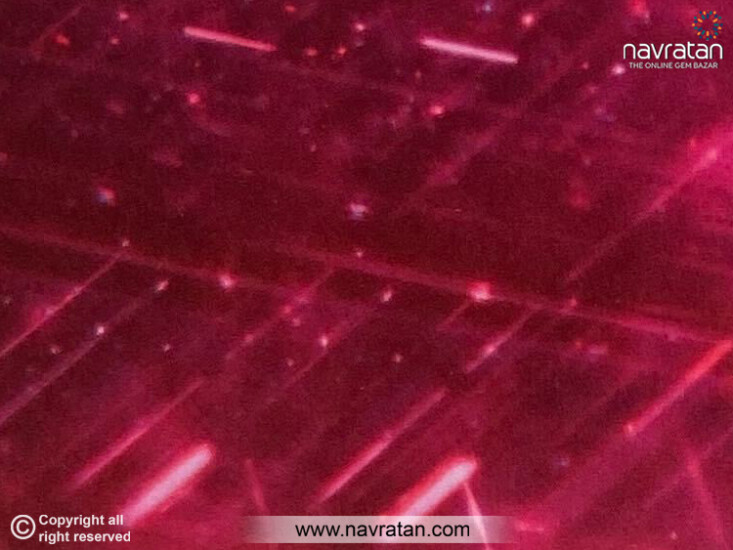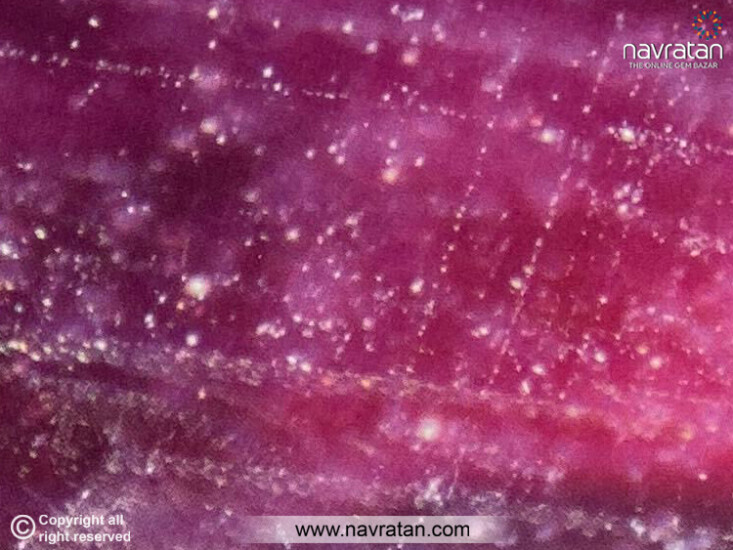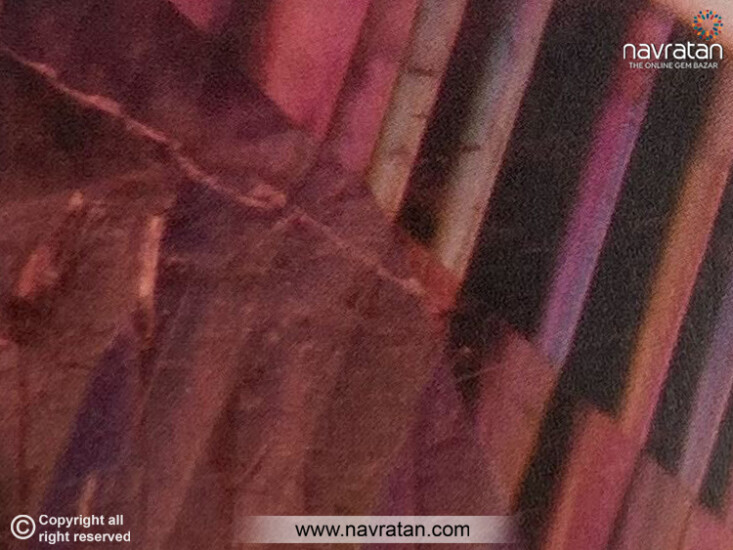 Categories
Categories 
Nature has its ways of showing us the beautiful side of life. For example, dreams allow us to see deeper into life. It takes us to the void that is unreachable but beautiful. Just like a natural gemstone, rubies have clarity inclusions that form within the gemstone as it forms in the earth. It is the amalgamation of various minerals and substances; thus, each piece is unique.
Inclusions in gemstones affect the transparency and impact how the light emits and reflects. Most natural rubies or manik stone contain inclusions; ones that do not have inclusions are highly valued and immensely rare. It impacts the light performance and color of the ruby inclusions. Ruby being the King of all gemstones, makes it crucial to know about all such inclusions in natural rubies.

Each part of the inclusions forms a different structure and a different appearance. Different types of inclusions can affect the value of the ruby inclusions in different ways. Some inclusions typically can be seen with the naked eye, while others need a 10x microscope.
Read More:- Different Types of Rubies
Here are some of them:
Silk
These inclusions look like silk fibers and are found in clusters. They are on the inside of the gem and look like fine fibers. These can have a little impact on color and clarity; they can whiten the ruby and discolor the beautiful red glow and hue.

Needles
It is one of the most popular inclusions found in sapphire; these are tiny, rutile needle-like irregularities, giving it dreamy transparency. They also go by "needles" since they appear in bunches and resemble dark crossband stone patterns. Star sapphires' is also a result of silk.

When present in a cut sapphire in a reasonable proportion, the rutile needles scatter light, perfectly illuminating the ruby's deeper facets and elevating the bright appearance. They are long and slender and often look a bit glassy, impact light performance, but less so on color. They can also look like a scratch inside the ruby stone and are located away from the surface, making them less visible in a gemstone.
Read More:- How To Tell If a Ruby Is Real
Crystals
There are more solid inclusions of various shapes and sizes, and they tend to look like tiny pinpoints or grains. These crystals are typically white or black, significantly impacting the rubies' color, visibility, and light performance. Almost all rubies have these inclusions, but you should avoid those with crystal inclusions.
Crack or Feather
Also known as fractures and fissures, these are featherlike in appearance; these inclusions will break the surface of the gemstone, which can impact the ruby's structural integrity. Because ruby is soft, these cracks can be dangerous, they are commonly white, and if they are large, they may compromise the ruby's structural stability. At the same time, minute feather inclusions will not affect the stone's overall appearance.
Twinning
Twinning makes crystals more visible because of their overall size; they can impact the visibility of the inclusion and affect the light performance and darkening color, depending on the color of the crystal. Some crystals are growing out of one another, they react to changes in the ruby formation. Ruby changes its direction of growth since the temperature and pressure are not always stable throughout formation and cooling.

Fingerprints
Fingerprints are pretty standard in rubies, and they are clustered together and look like tiny human fingerprints. Because they are small, they are less likely to impact the quality of ruby. They are networks of tiny liquid-filled tubes formed when sapphires re-crystallize to heal a fracture zone partially.
Cavity
Cavities are minuscule holes that extend into the ruby from the surface. Large cavities are visually unattractive and make a ruby look broken. When setting the ruby in jewelry, they can affect the structural integrity of the ruby.
They also represent the empty spaces on the gemstone's surface. It is a standard procedure to fill these fractures with color-infused glass; extreme cavities may be challenging to fix, leading to durability issues. And when this happens, the stone is heated to improve color and restore durability.
Scratches and Abrasions
Scratches are natural surface blemishes that look like rough scrapings on the surface of the ruby. They can be polished away; however, it depends on the scratch's size, location, and depth. In case it is deep, a lot of weight loss may result from scratch. They are typically quite visible because they are surface inclusions.
Color Zoning
Rubies are primarily red, but they tend to have other secondary colors. The uneven colors do not look uniform across the surface of the ruby, but inclusions can cause color zoning making portions of the ruby look pink. The cutting of the ruby also impacts color zoning; thus, cutters preserve the red hue and tone to make the color even.

Cloud and Pinpoints
Inclusions that are literally at the microscopic level are called pinpoints. When many pinpoints are clustered together, clouds are formed, and these do not qualify as a feather, fingerprint, or group of included crystals. More clouds and pinpoints reduce the strength and purity of the ruby. More extensive inclusions are white or pink; with fewer inclusions, ruby displays bright and even color.
Liquid Inclusions
These make many appearances inside rubies, like fingerprints, cavities, and discoid fractures, and are sandwiched between twinning planes. Very few liquid inclusions fill up negative inclusions, while this is not always an inclusion. They contain a liquid/gas bubble trapped during their enclosure.
Read More:- Everything You Should Know Before Buying The Ruby Stone
Final Words
Ruby gemstone inclusions are an exciting area of study for gemologists and help recognize the ruby stone properties more accurately than other methods. They accurately indicate a gemstone's origin, features, chemical composition, and the environment in which it was formed, etc. Inclusions can also be in various forms; while some are common and permanent, others are less desirable.
More or less, every inclusion has its beauty and, just like dreams, gives us a more profound perspective on things.


Anniversary Gifts By Year - Gemstones For 1st To 25th Anniversary
April 15th, 2025


Powerful Stones For Earth Sign Zodiacs (Taurus, Virgo and Capricorn)
April 11th, 2025